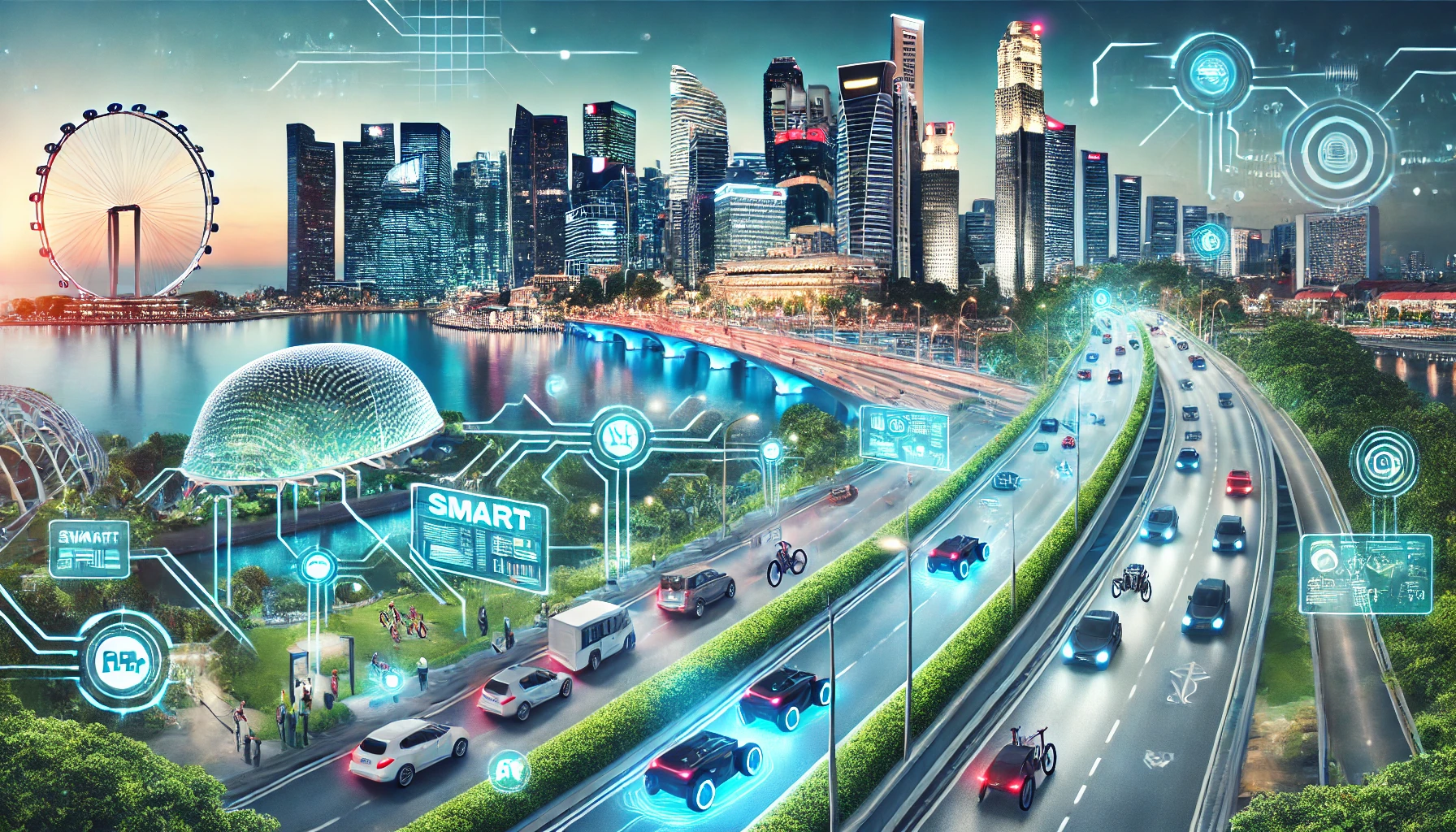Blog on RFID Technology and IoT Solutions
Blog Home
How Singapore’s Smart Traffic System is Redefining Urban Mobility
12 November 2024With increasing urbanization and vehicle numbers, managing city traffic is one of the biggest challenges faced by governments around the world. Singapore, however, is transforming this challenge into an opportunity with its advanced Smart Traffic System. By leveraging cutting-edge technologies, Singapore is reducing congestion, improving commuter safety, and leading the world in sustainable urban mobility. This article explores how Singapore’s Smart Traffic System works, its benefits, and what it means for the future of urban transportation.
What is a Smart Traffic System?
A Smart Traffic Management System uses technology to manage and optimize traffic flow. By collecting real-time data from various sources—such as road sensors, traffic cameras, and GPS-enabled vehicles—smart traffic systems can make data-driven decisions to ease congestion, improve safety, and support smoother journeys for drivers and pedestrians alike.
The primary goals of a Smart Traffic System include:
Reducing Congestion: Dynamically managing traffic to keep it moving smoothly.
Enhancing Safety: Reducing the risk of accidents by prioritizing pedestrian safety and managing traffic flow.
Sustainability: Lowering fuel use and emissions by reducing idle times and unnecessary stopping.
Commuter Experience: Ensuring more predictable travel times and less frustration for commuters.
Singapore has taken these principles and developed one of the world’s most advanced smart traffic management systems.
Singapore’s Smart Traffic System: An Overview
Singapore’s journey towards a fully integrated Smart Traffic System began as part of its broader “Smart Nation” vision. The country’s high population density and limited land make traffic management especially crucial. Key components of Singapore’s Smart Traffic System include:
Electronic Road Pricing (ERP): ERP is a toll system that adjusts charges based on real-time traffic conditions. By charging more during peak times, it encourages drivers to use alternative routes or travel at off-peak hours, easing congestion.
Intelligent Transport System (ITS): Intelligent Transport System provides a framework for integrating data from various sources, including real-time traffic cameras, GPS, and road sensors. This system allows traffic controllers to monitor road conditions, predict traffic patterns, and make quick adjustments.
Real-Time Traffic Monitoring: Traffic cameras and IoT sensors provide real-time data, which is analysed to optimize traffic light timings, manage congestion, and reduce idle times.
Together, these components make Singapore’s traffic system responsive, adaptive, and effective.
Technologies Powering Singapore’s Smart Traffic Network
Singapore’s Smart Traffic System uses a range of advanced technologies to achieve efficient urban mobility:
Artificial Intelligence (AI): AI algorithms analyse data to identify traffic patterns and potential bottlenecks. By predicting these patterns, the system can automatically adjust, such as changing traffic light timings.
Internet of Things (IoT): IoT devices, including sensors and cameras, gather traffic data in real time. They are placed at strategic locations to monitor road usage, identify incidents, and support data-driven traffic management.
Big Data Analytics: Collected data is analysed to create insights into traffic patterns, predict peak travel times, and design more efficient routes.
5G Connectivity: High-speed 5G connectivity allows rapid data transfer between IoT devices and the traffic management centre, enabling quick adjustments to traffic control systems.
GPS and Real-Time Navigation: Through real-time navigation systems, drivers receive instant updates on traffic conditions, helping them find faster routes and avoid congestion.
Benefits of Singapore’s Smart Traffic System
The benefits of Singapore’s smart traffic initiatives are transformative for the city and its residents:
- Reduced Congestion: Real-time adjustments and ERP pricing help manage road usage effectively, preventing gridlock and reducing the time spent in traffic.
- Increased Road Safety: Continuous monitoring and adaptive traffic systems lower accident rates, particularly for pedestrians.
- Environmental Impact: Reduced congestion leads to less fuel consumption and lower emissions, aligning with Singapore’s sustainability goals.
- Efficient Public Transportation: Buses benefit from optimized routes, shorter waiting times, and faster travel, making public transportation a more attractive choice for residents.
- Economic Benefits: Improved mobility supports productivity, as people and goods can move around the city more efficiently.
Challenges and Limitations
While Singapore’s Smart Traffic System is highly effective, it faces some challenges:
Privacy Concerns: Extensive data collection and tracking could raise concerns about privacy and data security for citizens.
High Costs: Implementing and maintaining a large-scale, high-tech traffic system involves significant financial investment.
Technical Reliability: Dependence on technology can pose risks if systems fail or if cyberattacks compromise the system’s integrity.
Public Adaptation: Ensuring public understanding and trust in the system’s purpose and benefits is crucial for successful implementation.
The Future of Urban Mobility in Singapore
As Singapore continues to lead in urban mobility innovation, several trends are likely to shape its future:
Autonomous Vehicles: Singapore’s Smart Traffic System can support the eventual introduction of autonomous vehicles, creating a seamless and efficient road network.
Enhanced AI Capabilities: Ongoing improvements in AI will enable even more accurate predictions, smoother traffic flow, and faster response to changes in road conditions.
Greener Transportation: As Singapore moves toward green initiatives, the Smart Traffic System will likely integrate with other eco-friendly infrastructure, like solar-powered charging stations and electric buses.
Global Influence: Singapore’s successful model serves as inspiration for cities worldwide, especially those facing similar challenges with high population density and limited space.
Conclusion: Lessons for Global Cities
Singapore’s Smart Traffic System offers valuable lessons for cities worldwide aiming to improve urban mobility. By combining technology, data, and proactive traffic management, Singapore has reduced congestion, enhanced commuter safety, and supported sustainability. Other cities looking to redefine urban mobility can adopt similar smart traffic initiatives, adapting them to their unique needs and challenges.
As Singapore’s experience shows, the future of urban mobility lies in smart, adaptable, and people-cantered traffic systems. With the right approach, cities can improve the quality of life for residents while supporting economic growth and environmental sustainability.
- Intellistride.com
- Blog
- How Singapore’s Smart Traffic System is Redefining Urban Mobility